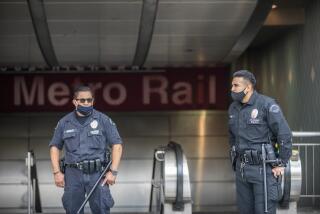Uber gets serious with newly created safety advisory board

Uber’s newly created advisory board will advise it on security and safety issues.
- Share via
In a sign that on-demand transportation company Uber is maturing, the San Francisco company announced Tuesday the creation of a safety advisory board to help it navigate safety and security hurdles.
The six-member board is made up of outsiders such as former Boston Police Commissioner Ed Davis; former deputy executive director of the Texas Department of Transportation John Barton; and National Network to End Domestic Violence executive vice president Cindy Southworth. They will advise Uber’s internal safety and security teams.
The board’s areas of expertise include physical safety of drivers and passengers, data security, and ways of working with local law enforcement.
SIGN UP for the free California Inc. business newsletter >>
“Throughout my careers as I’ve focused on tech security and safety, one of the things I’ve always known is you can’t do it alone, especially with emerging tech and the evolution of products going so quickly,” said Uber’s first chief security officer, Joe Sullivan, who joined Uber eight months ago. Prior to Uber, Sullivan held similar posts at Facebook and eBay.
“You always need to look at it from a lot of different perspectives. [For example], John Barton is going to give me a perspective on highway safety that I don’t have. Cindy is going to give me a perspective on sexual assault [that I don’t have].”
Uber has faced no shortage of safety and security challenges over the last 12 months. On the data side, a security breach announced in February may have affected up to 50,000 Uber drivers in California. On the passenger safety side, it has continued to take flak from the San Francisco and Los Angeles district attorneys, as well as the taxi and limousine industry over the effectiveness of its driver background checks.
Twitter: @traceylien
ALSO
Start-up app Purple fills up gas tanks for time-crunched customers
Inside Snapchat’s newest feature: Story Explorer
Pfizer and Allergan’s $160-billion pharmaceutical merger puts new twist on tax-avoiding inversions







